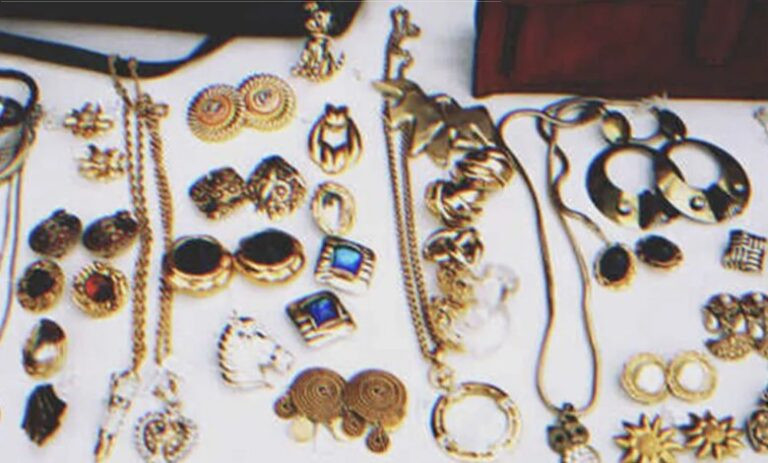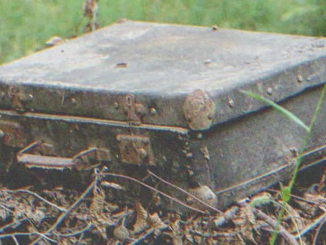Have you ever opened a bag of chips, expecting only crispy, flavorful bites, but instead, you found a mysterious blue disc hidden among them? If so, you’re not alone. Many people have stumbled upon this puzzling object, often embossed with text such as “Ferrous 25mm BST, Cert No. 213026B.” But what does it mean? And more importantly, how did it end up in your snack?
What Is the Blue Disc Found in a Packet of Chips?

At first glance, you might think it’s a promotional token, a production defect, or even an unexpected prize. However, this small blue disc is actually a metal detector test chip used in food processing plants.
This test chip is designed to ensure that food safety equipment—specifically, metal detectors—are working correctly. These chips are strategically placed on the production line to verify whether the detectors can identify and remove potential foreign objects. The blue color helps it stand out from the food, making it easier to spot if something goes wrong.
Why Are Metal Detector Test Chips Used in Food Manufacturing?
Food safety is a top priority for manufacturers. The presence of any foreign object, whether metal, plastic, or glass, poses a significant risk to consumers. To prevent contamination, most factories use metal detectors to scan food items before they are packaged and shipped.
Here’s how the process works:
- Test chips—like the one you found—are deliberately inserted into the production line at set intervals.
- Metal detectors scan the products, ensuring they catch the test chips.
- If the machine detects the chip, it triggers an alert and removes the contaminated item.
- If the chip is NOT detected, it signals a potential failure in the system, and production is halted until the issue is resolved.
Why Did the Test Chip End Up in My Chips?
Now, here’s where things get concerning. The very reason test chips exist is to prevent foreign objects from getting through. So if you found one in your bag of chips, it means something seriously went wrong in the quality control process.
There are a few possible explanations:
- The chip was misplaced and never retrieved – This suggests a human error where someone forgot to remove the test chip after conducting quality control.
- The metal detector failed – This is the most alarming possibility. If the detector failed to catch the test chip, it may have also missed other harmful objects, such as metal fragments or contaminants.
- Production oversight – Sometimes, manufacturing processes get rushed, and crucial safety checks are overlooked.
Regardless of the reason, this is a major red flag that warrants immediate action.
What Should You Do If You Find a Metal Detector Test Chip in Your Food?
If you ever find a test chip inside a food product, take the following steps:
- Do NOT consume any more of the product – There could be other contaminants present that went undetected.
- Keep the packaging and the chip – This will be crucial when reporting the issue.
- Contact the manufacturer immediately – Most brands have customer service lines or emails where you can report quality concerns.
- Request an explanation and possible recall information – If a test chip made it into your food, there’s a chance others might have had the same experience.
- Consider reporting the issue to a food safety authority – Agencies like the FDA (in the U.S.) or the FSA (in the UK) monitor food safety standards and may investigate further.
Will the Manufacturer Face Consequences?
Yes! Food safety protocols require companies to document every test chip used in their quality control process. When a test chip goes missing, production should stop immediately until it is found.
If you report the incident, the company will likely conduct an internal investigation to determine how this breach occurred. In some cases, it may even lead to:

- Product recalls – If multiple reports emerge, the company may be forced to recall entire batches of the affected product.
- Fines and penalties – Regulatory agencies may impose fines if they determine that safety protocols were neglected.
- Operational reviews – Manufacturers might overhaul their processes to prevent similar failures in the future.
Could There Be Other Foreign Objects in My Chips?
The unfortunate reality is that if a test chip made it through, other foreign objects could have as well. While food safety measures exist to minimize risks, errors do happen. There have been cases of consumers finding:
- Plastic or rubber fragments from conveyor belts
- Metal shavings from broken machinery
- Glass pieces from shattered equipment
- Insects or other biological contaminants
This is why quality control is so critical. The presence of a metal detector test chip in your chips raises serious questions about the reliability of the manufacturer’s safety measures.
Final Thoughts: Should You Be Concerned?
Absolutely. While finding a blue test chip in your chips might seem like a bizarre fluke, it’s actually a major food safety failure. These chips are meant to stay on the production line, not end up in your snack bag.
If this happens to you, take action. Report it, demand accountability, and spread awareness. Food safety should never be compromised, and manufacturers must be held to the highest standards to ensure that what we eat is truly safe.
Elderly Woman Spots Her Late Mother’s Pendant at a Flea Market, Then Suddenly Hears, ‘I’ll Pay Twice the Asking Price’

An 80-year-old woman unexpectedly found her late mother’s treasured pendant in an antique store. She decided to buy it but was interrupted by a stranger offering to pay double its price. She burst into tears after recognizing who it was.
80-year-old Samantha was a regular shopper at the thrift store. She loved buying antique showpieces and furniture to adorn the little home she lived in alone.
One day, she went shopping, assuming it would be just an ordinary day at the flea market.
“I hope I find a nice shelf to go under Paul’s photo. The old one is broken,” she mumbled.
Paul was her late husband, who had died just a year after their wedding in 1963. Since then, Samantha refused to move on and chose to live with his memories, and his photo was one among her treasured items…
“Hello there, how can I help you, Mrs. Drake?” the vendor in the furniture store asked.
“Well, I want a nice shelf. Not a grand one, but something small with elegant cuts and durable wood.”
“Alright! Why don’t you sit down while I bring a few pieces?”
“Why would you want to buy my mom’s pendant?” Samantha asked the stranger who offered to pay double the price for it.
Samantha sat in the store, looking around. Moments later, the antique shop across the road opposite the furniture store drew her attention.
“I’ll be back in a bit. I’ll just go check out the store across for a candle stand,” she said.
“Alright, Mrs. Drake. I’ll be ready with the shelves by then.”
Shortly after Samantha entered the antique shop, she was startled by what she saw there.
“Oh my God! This can’t be it. Where did you get this?” she asked, her eyes gleaming with tears as she pointed to a classic red pendant on the mannequin.
“Hey, Mrs. Drake! Did you mean this one?” The seller brought down the beautiful chain with the pendant from the display.
“Yes, please…can I see it?”
“Sure, here you go… That’s $40, but I’ll give it to you for $5 less…” The vendor smiled.
Samantha flipped the pendant several times and could no longer hold back her tears.
“I found it…This belonged to my mother!” she exclaimed, tears endlessly streaming down her face. “From where did you get it?”
“I don’t know, but my dad told me that someone sold it to him several years ago… It had not gone on display because my dad kept it at home. After he died last year, I cleared the attic and found it there. So I put it up here for sale.”
Samantha could not believe her eyes. “I’m getting it!” she said, and just as she dug her bag for the money, she heard someone enter, followed by a loud voice:
“I’ll pay double its price…Please give it to me…I want it at any cost!”
Samantha was startled. She turned around, only to gasp in astonishment after seeing a woman who looked like her.
“Oh my God! I can’t believe this! Am I looking at myself in the mirror?” panted the other woman.
“Oh, dear! What’s happening? And how come you look exactly like me?” shrieked Samantha.
The two women stared at each other for quite some time, unable to fathom their uncanny resemblance.
“Wha—What’s your name? I’m Samantha…And you?”
“I’m Doris!”
“And why would you want to buy my mom’s pendant?”
“Your mom’s pendant?”
“Yes, this is my mom Dorothy’s pendant… We became very poor after my dad left my mom, so she sold everything we had to make ends meet, and this pendant was among the heirlooms she sold. She sold it to a man, but I don’t know how it reached here.”
“So that makes you my sister?!” Doris shrieked, hugging a confused Samantha, who could not understand what was happening.
“Sister??? What do you mean?” she exclaimed, pushing Doris back for an explanation.
“Let me show you,” replied Doris, who took out an old, torn photo of Dorothy wearing the pendant with a little girl on her lap.
“Jesus Christ! This is unbelievable! This is my mother, and this is me with her,” exclaimed Samantha.
“No, that’s not you…THAT’S ME! We’re twins!” replied Doris, stunning Samantha.
“What? How could that be? Oh my God…I never knew I had a sister!” cried Samantha.
As it turned out, Doris was indeed Samantha’s twin. Their parents, Dorothy and Michael, went through a rough patch in their marriage and divorced when Samantha and Doris were just a year old. They parted ways, each taking one child to raise independently.
Samantha was raised by Dorothy, while Doris was taken by her dad. They were separated right from childhood and never got a chance to see each other again.
“….And when my granny died 40 years ago, she revealed the secret when I asked her about the other half of this torn photo,” cried Doris.
“Dad had passed a year before her, so I could not confront him. He never left anything else of you that could help me track you. I lost my husband several years ago and have no children. I kept looking for you but in vain… I think it was God’s will for us to meet like this today, thanks to mom’s pendant!”
“I came here to buy a candle stand, and right now, I am baffled!” Samantha cried like a kid in Doris’s arms. “You can have the pendant! I had seen mom wear it, but you never got a chance to even be with her. It should belong to you now!”
Doris was touched and moved to tears. Samantha bought the pendant and placed it around Doris’s neck.
“You remind me of our mother! I’m glad to meet you. Let’s go home!” she said as an excited antique store owner saw the silhouette of Samantha and Doris exit his store, holding each other!
What can we learn from this story?
You may never know about the history an old piece of artifact might have. When Samantha saw the pendant in the antique store, she immediately recognized it as her late mother’s. She would soon learn that the pendant would reunite her with the twin sister she never knew.
Sometimes, children suffer fateful consequences from the decisions their parents make. After their divorce, Michael and Dorothy separated their twin daughters, each taking one. The sisters never knew about each other for several decades until they accidentally met at the antique store and recognized each other.



Leave a Reply